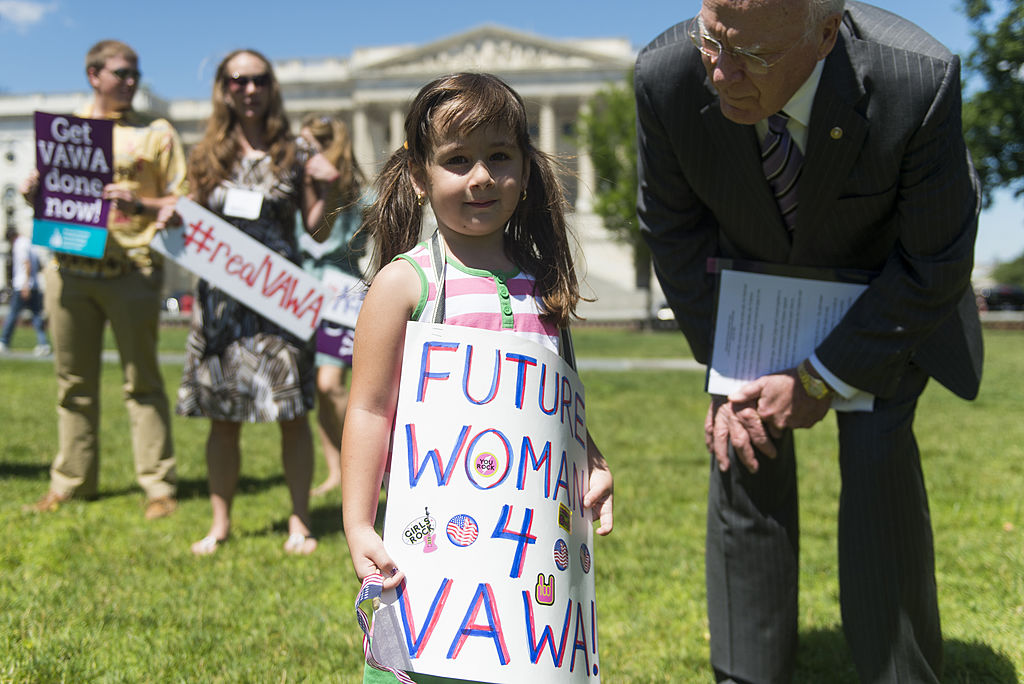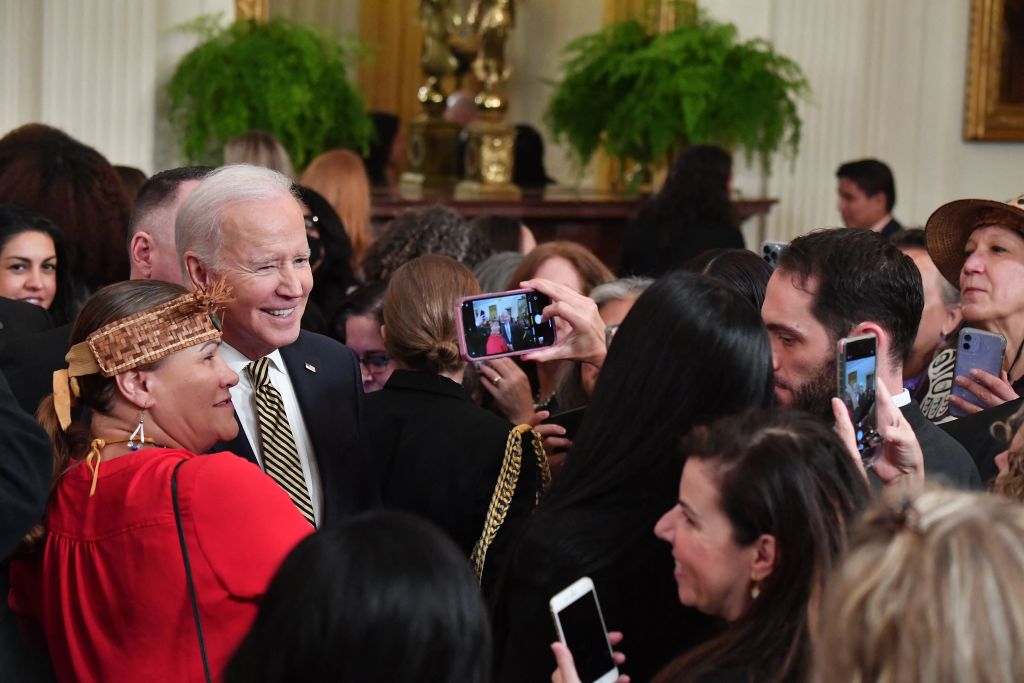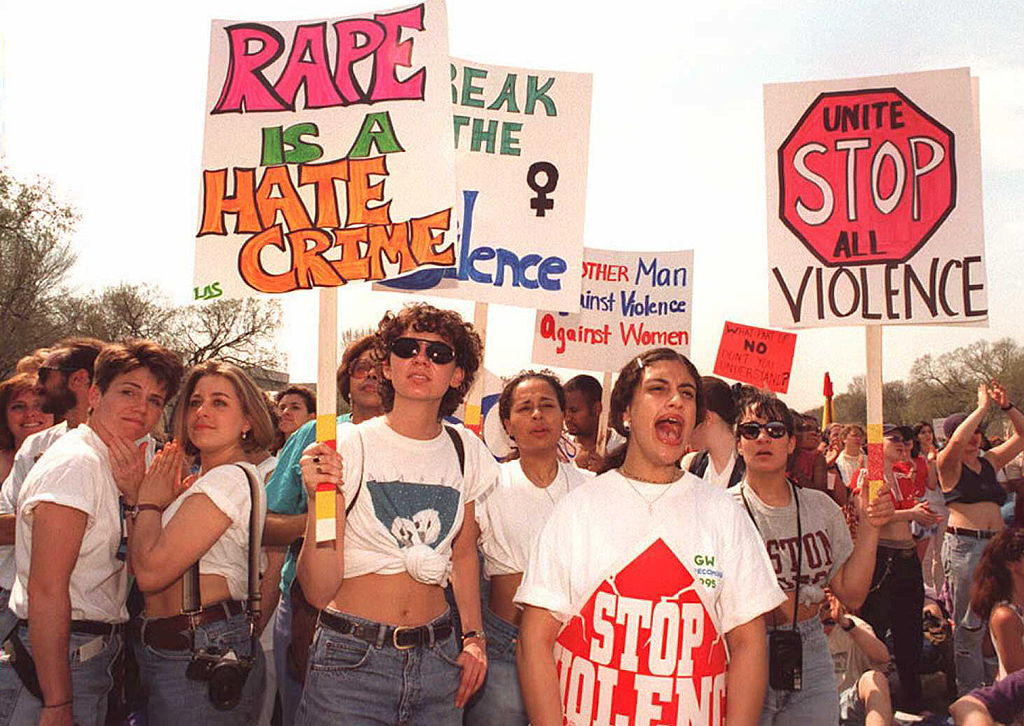Today, more Americans than ever recognize family violence as a societal problem, worthy of public attention and investment. The Violence Against Women Act helped make that happen.

On a long list of issues in the newly released YWomenVote survey, women identified domestic and sexual violence as the third most important one facing U.S. women collectively. It’s not a surprise to those of us working to stop this violence that it was behind only abortion access and the economy/cost of living. As we mark the 30th anniversary of the Violence Against Women Act on Friday, Sept. 13, at this time of so much cynicism and division, it’s worth remembering one lesson that law teaches: Progress is possible.
VAWA’s passage was truly a turning point for our country. This transformative, imperfect but ever-improving law was well worth the years-long effort to get a recalcitrant Congress to pass it. That work was excruciating at times. We had to listen to lawmakers dismiss brutal murders as “lovers’ quarrels that got out of hand.” Some expected us to laugh when they accused us of “trying to take the fun out of marriage.” Many insisted domestic and sexual violence were private matters best handled by families. Never mind the health and economic costs, the dangerous law enforcement engagements, or the trauma that for many lasted a lifetime.
The consensus among Washington powerbrokers—mirroring public sentiment at the time—was that issues of domestic violence and sexual assault didn’t belong in the public domain. That has changed. Policymakers and Americans more broadly now recognize family violence as a societal problem, worthy of public attention and investment. And the Violence Against Women Act helped make that happen.

It’s bittersweet that as we mark VAWA’s 30th anniversary, we are losing one of its greatest champions, with President Joe Biden preparing to leave public office. We should never forget his leadership and that the work VAWA funded had an incredible impact; in the years after it was enacted, domestic violence against adult women declined by more than 60 percent.
Today, a new generation carries on the unfinished business of ending domestic and sexual violence. Here are four strategies to guide that work.
Keep looking to improve the law. VAWA provided funds for urgently needed services; improved legal responses; brought health care providers, schools and other institutions into the work; introduced training for judges and law enforcement; launched the National Domestic Violence Hotline; and more. But it wasn’t enough, and we worked continuously to improve and expand the law, making changes to ensure fewer people would be caught up in the criminal justice system, expand it to more communities, provide economic support to survivors, promote prevention, and address the needs of children and youth growing up in homes with violence. We improved VAWA each time it was reauthorized.
Fight for what matters most. Trade-offs are never easy, but we can’t waver on the measures that hold the most promise to stop the violence. We need to fully close the boyfriend loophole so no abusive partner—whether married or not—can access guns; close the stalking loophole so those with convictions or restraining orders for stalking cannot access guns; expand services to cover everyone; allow VAWA funds to support intervention programs focused on abusive partners; address teen dating abuse more fully; and invest more resources to stop child sexual abuse.
Focus more on prevention and healing. We need a greater focus on prevention and culture change and to engage more on high school and college campuses, so everyone learns at an early age that all violence is unacceptable. And for when it does occur, we need more services for traumatized children and adult survivors, including more direct economic support. We need more culturally specific services for communities of color and more support for rural communities. We need to end the backlog in processing rape kits so timely justice is possible for survivors.
Keep up with the times. New technologies and new circumstances (like COVID-19) pose new challenges, and the public policy response has often been inadequate or slow. As a country, we’ve done a poor job of addressing the online abuse, stalking and harassment that are so common, the human trafficking that is present in too many communities, and the growing isolation of young men that often feeds violence and hate. We need to be more nimble and aggressive in meeting emerging challenges because they won’t solve themselves.

Thirty years after VAWA, I am confident we can continue the progress and that a new generation will prioritize and bring passion and creativity to this work. It will take resolve and political leaders willing to put aside differences and work together to make our homes and communities safer—just as it always has.
At Ms. magazine, our mission is to deliver facts about the feminist movement (and those who stand in its way) and foster informed discussions—not to tell you who to vote for or what to think. We believe in empowering our readers to form their own opinions based on reliable reporting. To continue providing you with independent feminist journalism, we rely on the generous support of our readers. Please consider making a tax-deductible donation today if you value the work we do and want to see it continue. Thank you for supporting women’s voices and rights.





